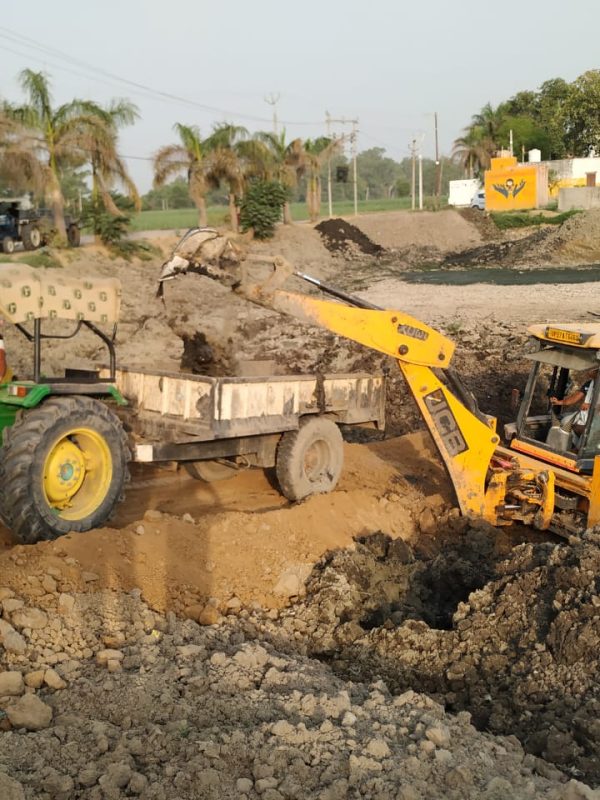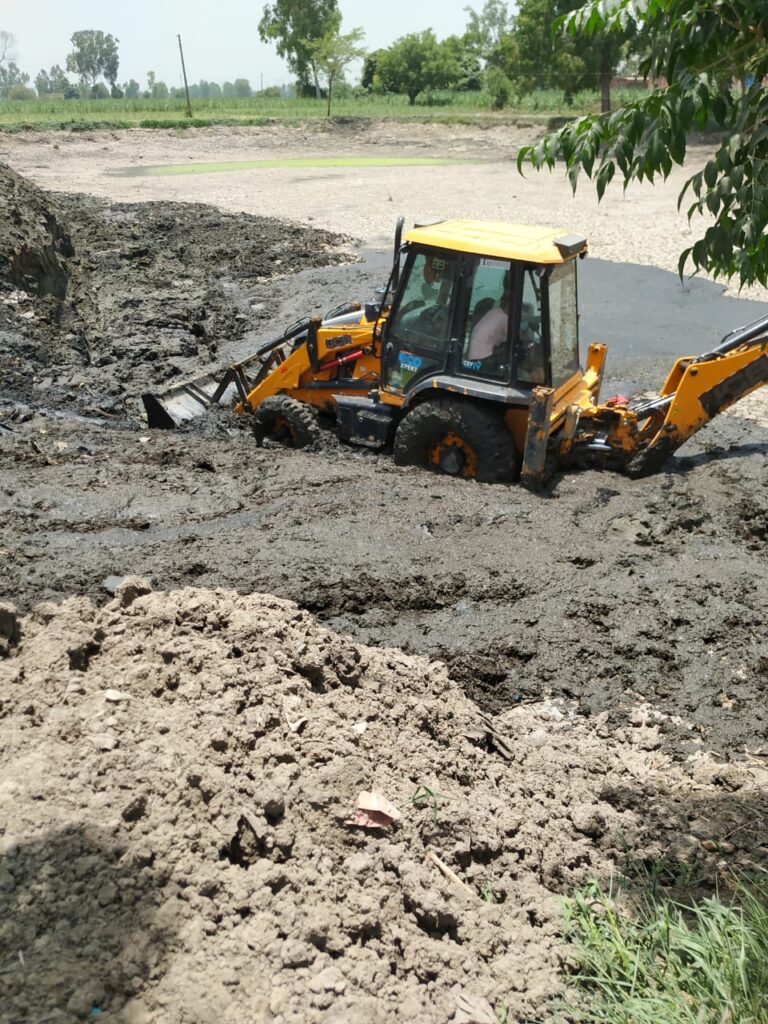Pond Development Work
What is Pond ?
A pond is a natural or artificial water body, usually surrounded by a barrier, dam or thick wall. These water bodies are consumed as a source of vegetation and water and are important for life, and their management is closely linked with the natural environment and water resources.
Ponds are not just bodies of water; they are lifelines. They are crucial for water harvesting, supply, river development, dam construction, water conservation, and natural water management. In both rural and urban areas, ponds are indispensable as a source of drinking water, irrigation, animal husbandry, and waterways.
The types of ponds can be various. These can include marine ponds, lakes, small and large canal ponds, Sagar, bays, ahar, Pushkarni, ponds, lakes, ponds and fossil ponds. These ponds are also famous for their natural beauty and climate.

Pond development Work
Ponds are primarily used for storing big amounts of liquid, especially water, in places with no water or where water transport costs are very high. Not only construction but also these ponds can be used to contain different types of liquids in other industries besides construction. The treated water can be kept in agricultural ponds while the mining pond can be processed with the addition of processing liquid. The selection of different geomembranes makes construction ponds suitable for other industries in both above-ground and in-ground applications.

The Basic Parts of a Construction Pond
Construction ponds consist of three essential parts, including:
Subgrade
Pond liner or geomembrane
The Pond, on the other hand (and the water and the infrastructure that was used to fill, drain, and deal with seasonal infiltration of water.)
The subgrade is the layer of earth underneath and around the Pond. The levees are constructed to give a particular shape to the Pond. The spillway is a structure that is needed, especially in the case of large ponds, to ensure that flooding does not destroy the Pond’s structure. Several factors determine the making of large ponds. We are, after all, dealing with the situation of many thousands of gallons of water. The earthen site has to be secure, trustworthy, and built, taking into account various aspects such as floods that may occur once in 100 years, the locations, etc. Often, a subgrade is made with a geosynthetic layer between the liner and the dirt to help increase protection.
A pond liner or geomembrane is a material that holds water or liquid water and prevents its leakage through the walls of the tank. The leakage of the liquid in the Pond may result in the weakening or even the destruction of the pond structure. The pond liner may be a single membrane, or it may consist of several layers that prevent the contaminants from reaching the soil. Alternatively, the liner can keep the soil contaminants from entering the pond liquid. The type of pond liner is one of the first thoughts when it comes to pond construction design. The insufficient pond liner can bring about endless maintenance to the Pond, a reduction of its life span, and the possibility of the Pond being a dangerous place, including breaches.
The Pond is the surface area of the water, including the water itself, its depth, and the adjacent development needed to fill or empty it. Moreover, a project may be designed to allow for the use of common sidewalls or levies between two or more ponds, and these ponds do not have to be rectangular.
Benefits of Pond Development Work
Pond development has a range of advantages, including:
- Water storage: These rainwater reservoirs and ponds are treatment sources used in dry seasons.
- Flood control: The ponds play a direct role in the upkeep of overabundant rainfall, which probably results in lower flooding.
- Support for agriculture: One way that farmers can benefit from the rainy season is to use pond water for irrigation, especially in regions where water is scarce.
- Fish farming: Ponds are the best places in the world to raise fish, which is a source of income for communities.
- Environmental benefits: The ponds are home to flora and fauna, such as birds, insects, and aquatic plants, which contribute to the environment’s biodiversity.
- Recreational use: When the ponds are properly maintained, they will become places where people can relax, fish, and enjoy other recreational activities.
Conclusion
Pond development actions make over the forgetful ponds and convert them into tranquil set designs, green facilities, and functional spaces. The environment and the community reap the benefits of clean water, wildlife support, and a natural, serene space for everyone to enjoy.


